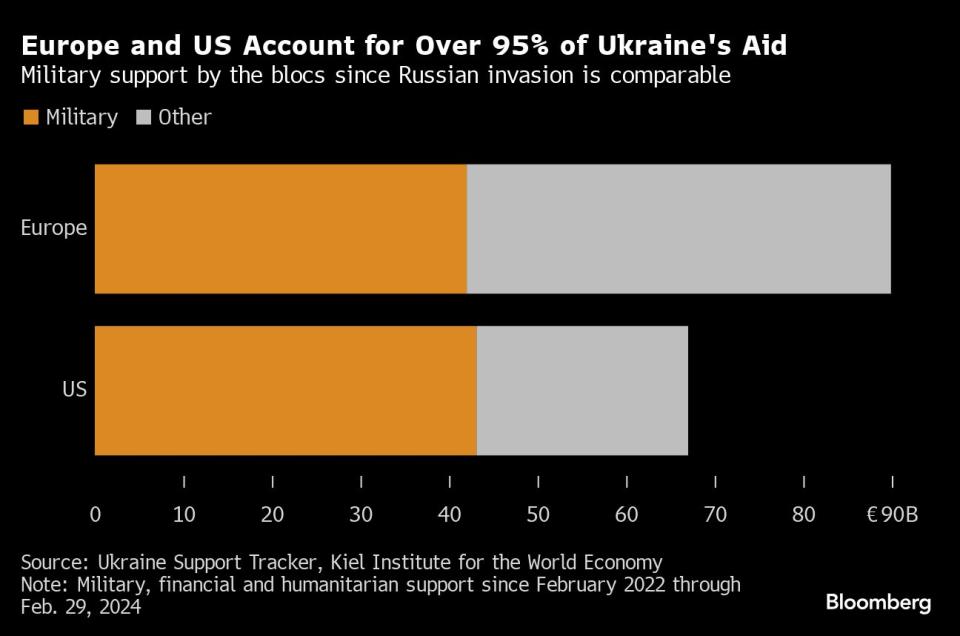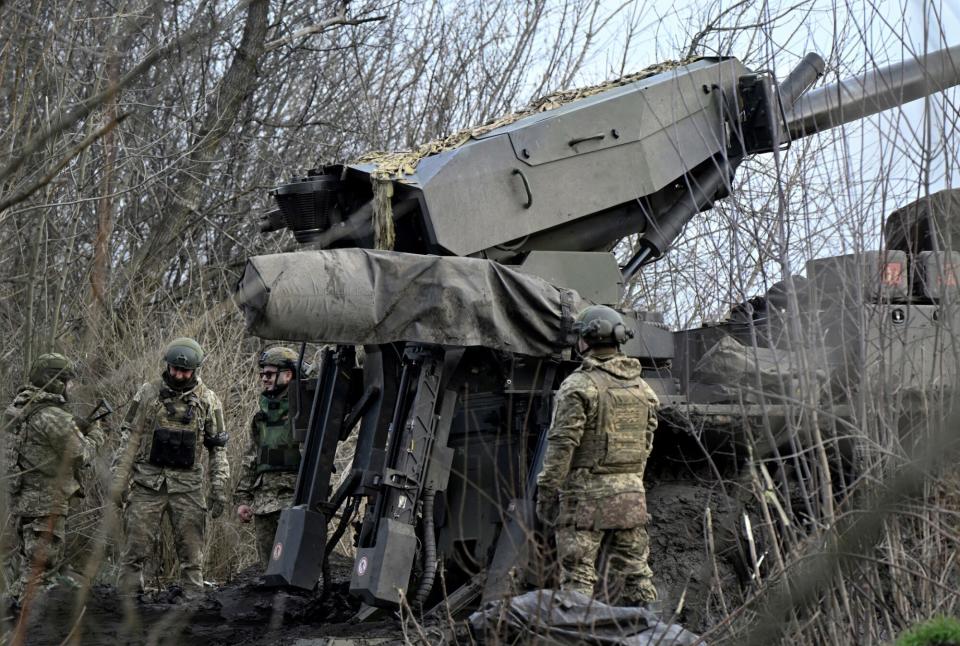EU Approves Plan to Use Profits From Frozen Russian Assets
(Bloomberg) -- European Union member states on Tuesday approved a plan to use the profits generated by frozen Russian sovereign assets to support Ukraine’s recovery and military defense.
Most Read from Bloomberg
One Dead After Singapore Air Flight Hit By Severe Turbulence
‘It Felt Like We Had Crashed’: Singapore Air Passenger Describes Turbulence Terror
Barclays Managers Warn Some Staff to Prepare for Five Days a Week in Office
This move will provide Ukraine as much as €3 billion ($3.3 billion) this year, 90% of which will go to Ukraine’s military, Czech Foreign Minister Jan Lipavsky wrote on the social media platform X.
About $280 billion in assets have been immobilized by the Group of Seven nations since Russia’s 2022 invasion of Ukraine, with more than two-thirds of those held in the EU. The vast majority of the funds has been held through the Belgium-based settlement giant Euroclear, where they have generated about €3.9 billion in net profit since last year.
The US has been pushing a separate plan that would leverage the future revenue of the frozen assets to back a $50 billion loan to Ukraine. Should the G-7 reach an agreement on this accord, it would replace the EU initiative.
Bloomberg reported earlier Tuesday that Germany is now ready to support the American plan.
Under the EU’s plan, Ukraine would receive the net profits from Feb. 15 onwards. Some €159 billion of frozen Russian assets have generated a net profit of €557 million from that date, according to Euroclear’s first quarter financial results.
Profits before the Feb. 15 date will be retained by Euroclear to handle any risks such as those deriving from legal action in Russia. The EU plan also includes a mechanism to allow the clearing house to retain more funds should those resources prove insufficient to manage any sudden and unexpected risks.
The adoption of the proposal by EU affairs ministers in Brussels comes after months of haggling between member states amid worries about possible legal challenges, retaliation from Russia and risk to the stability of the euro.
The assets are expected to generate about €5 billion a year, with Ukraine receiving the aid twice a year.
--With assistance from Megan Howard.
(Updates with details on a US plan in the fourth paragraph.)
Most Read from Bloomberg Businessweek
A Hidden Variable in the Presidential Race: Fears of ‘Trump Forever’
Millennium Covets Citadel-Size Commodities Gains, Just Not the Risk
Netflix Had a Password-Sharing Problem. Greg Peters Fixed It
©2024 Bloomberg L.P.




